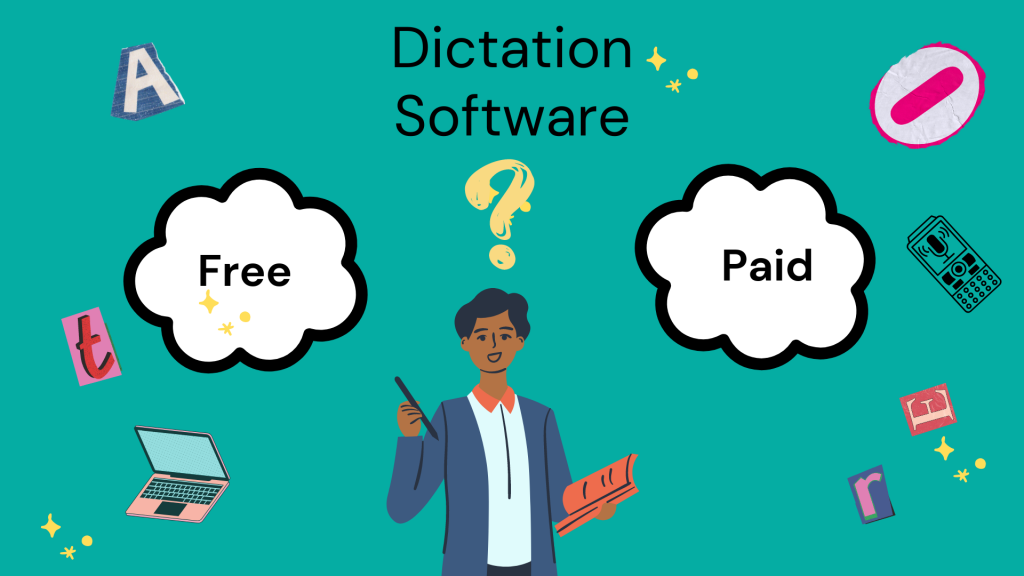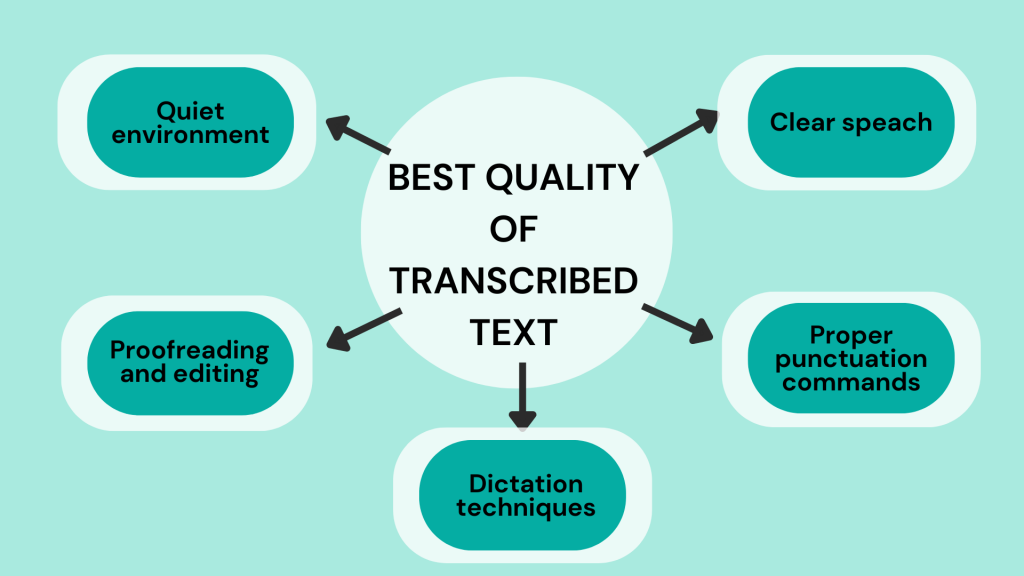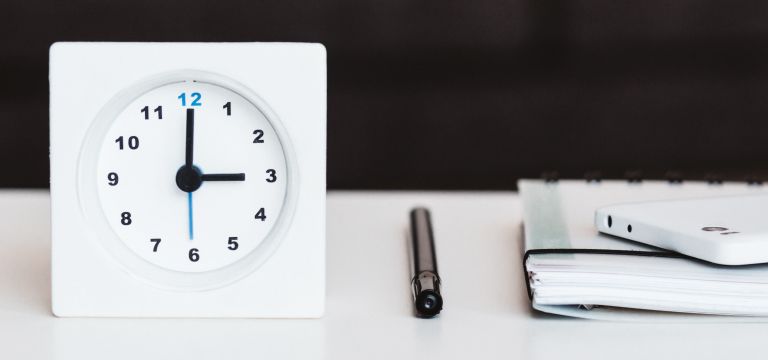Students strive for efficient studying techniques that can help them excel academically. Finding the right tools to enhance their learning experience is essential in this digital age. One such tool that holds great potential is dictation software.
According to a recent report by ResearchAndMarkets.com, the text-to-speech (TTS) market was valued at $2.8 billion in 2021 and is projected to reach $12.5 billion by 2031, with a compound annual growth rate (CAGR) of 16.3% from 2022 to 2031.
Learners may use speech-to-text software to transform spoken words into text, making it a useful tool for transcribing. In academic settings, text-to-speech technology regularly proves to be of immense value. It also provides numerous advantages, such as improved productivity, enriched note-taking capabilities, and increased accessibility for students with disabilities. By harnessing the power of this instrument, young minds can simplify their learning approach and concentrate on understanding rather than writing mechanics. So, let’s dive in and discover the world of the top audio-to-text converters that will change the way you learn.
Investigating the Best Dictation Software for Students: Paid and Free Alternatives
Students have a variety of dictation app alternatives to pick from. In this section, we will try to analyze some of the best verbal transcription technologies for 2023 that are available to students, both in paid and free categories. The Hubspot portal included them in its review of the most useful dictation programs. Let’s take a closer look at these tools and how they can benefit you in your academic journey.
Free versions: convenient and accessible options
For students who want to experiment with voice-to-text technologies, free dictation software is a cost-effective option. Here are a few notable options:
Google Docs Voice Typing
- Description. Google Docs Voice Typing is a free dictation app incorporated into the well-known Google Docs platform. By allowing students to dictate with their voices, the program transcribes their words immediately and displays the text on the screen.
- Benefits. As a free option, Google Docs Voice Typing provides a convenient and accessible solution for students. It supports multiple languages, offers decent accuracy, and integrates seamlessly with other Google productivity tools.
- Price. Free with a Google account.
Windows 10 Speech Recognition
- Description. Windows 10 Speech Recognition is a function embedded into the Windows operating system. It allows users to manage their computers and dictate text merely by speaking. It offers basic dictation capabilities and is suitable for students looking for a simple, no-cost solution.
- Benefits. The app provides a convenient option for students who want to give dictation software a try without investing in premium tools. It also can be a useful starting point for exploring the benefits of voice-to-text technology.
- Price. Users of the Windows operating system are not charged.
Apple Dictation (Mac)
- Description. Available as a built-in feature on Mac computers and devices, Apple Dictation provides users with seamless dictation functionality without the installation of extra software. It empowers clients to speak out text in a variety of apps and provides voice commands for navigation and control.
- Benefits. As one of the native features on Apple devices, the software provides a seamless and integrated dictation experience for Mac users. It provides adequate transcribing accuracy.
- Price. Price free with Mac computers and devices.
Paid versions: enhancing productivity and accuracy
Paid dictation software offers cutting-edge features and high accuracy, making them ideal for students who require precise transcriptions and robust functionality. Here are a few popular options:
Dragon Speech Recognition Solutions
- Description. Dragon Speech Recognition Solutions is a leading name in the field of dictation apps. They utilize advanced technology to convert expressed words to text in real-time, with remarkable precision. It boasts robust voice recognition capabilities, allowing students to dictate their notes, essays, and research papers with ease.
- Benefits. With its renowned recognition of the spoken language engine, the Nuance Dragon dictation tool guarantees exceptional accuracy in transcribing spoken words, minimizing the requirement for extensive editing. The software remembers and adapts to your voice and writing style over time, resulting in improved accuracy and effective performance adapted to your individual requirements.
- Price. Dragon Speech Recognition Solutions is a premium dictation software with different pricing options depending on the version and user requirements. Pricing ranges from $15 (Dragon Anywhere) to $500 (Dragon Professional Individual) per month, with discounts available for educational institutions.
Microsoft Office Dictation
- Description. Microsoft Office Dictation is a great component available in the Microsoft Office suite on your computer. It enables users to dictate their content directly into these applications, providing a convenient and integrated dictation experience.
- Benefits. As a part of the widely used Microsoft Office suite, this dictation feature offers seamless integration and familiarity to students. It eliminates the need for external software, making it a cost-effective option for active Microsoft Office users.
- Price. Microsoft Office Dictation is available as part of the Microsoft Office subscription, which provides several price options depending on the specific needs of students.
Braina Speech Recognition Software
- Description. With its real-time transcription capabilities, Braina Speech Recognition Software stands as an immensely powerful tool, transforming spoken words into written text seamlessly. It has a user-friendly interface and supports multiple languages for seamless interaction.
- Benefits. In addition to its recognition of spoken language capabilities, Braina offers a lot of outstanding features, such as virtual assistant functionality, voice control, and text-to-speech conversion. The software integrates well with various applications and platforms, making it convenient for students to use it alongside their preferred tools.
- Price. The product is available in both free and paid editions. Braina Lite, the free version, provides basic capabilities. For additional features and premium support options, you are welcome to opt for the premium version, Braina PRO, available at a price of around $80.
When selecting the ideal software for your studies, it is crucial to take factors such as your specific requirements, budgetary considerations, and the program’s compatibility with your devices into account.
How to Utilize Dictation Software for Effective Studying
Dictation software is an easy-to-use, essential instrument for effective studying, offering various ways to optimize your learning experience. Let’s explore how you can utilize speech-to-text programs in different study scenarios.
Note-taking and summarizing lectures
You can use dictation software for taking thorough notes during classes, which is essential for memorizing information. It also can assist you to transcribe spoken content into text. Here are some strategies to make the most of speech to text tools during lectures:
- Active listening and dictation. Stay engaged in the lecture by actively listening and dictating the main points, key concepts, and relevant examples. Use voice commands to pause, rewind, and play back the recording as needed.
- Organizing and reviewing transcriptions. After the lecture, review and organize the transcribed notes. Use headings, bullet points, and highlighting features to structure your summaries effectively. You can also add personal insights and questions for further study.
Voice typing software can typically recognize speech at a rate of up to 160 words per minute.
Writing essays and research papers
In terms of writing assignments, the use of dictation software can greatly boost your performance and efficiency. Here’s how you can incorporate it into your writing process:
- Dictation for content creation. Create your first draft using a dictation program by speaking out your ideas, arguments, and supporting evidence. Focus on expressing your thoughts clearly and naturally. Remember to include punctuation commands to ensure accurate transcription.
- Proofreading and editing transcribed content. Once the text that you provided is transcribed, proofread and edit it carefully. You have to check it for any errors or discrepancies that might have occurred during the transcription process. Make necessary corrections, restructure sentences, and refine your writing to ensure coherence and clarity.
“As you might expect, this is just my personal preference, but I’ve never been a fan of dictation programs. In my studies, I preferred to use the Cornell method for note-taking.”
Wang Shu Huang, a recent university graduate
Studying and reviewing course materials
Dictation software can also aid in studying and reviewing course materials effectively. Here are a few techniques to try:
- Creating audio summaries and flashcards. Convert your written notes or study materials into audio summaries using a dictation program. This is your opportunity to listen to the key points while engaging in other activities like commuting or exercising. You can also create audio flashcards by dictating questions and answers for self-quizzing.
- Utilizing voice commands for navigation and searching. There are several dictation software packages that offer voice commands for navigation and searching within documents or web pages. Make use of these commands to quickly jump to specific sections, search for keywords, or navigate through study materials more efficiently.
How to Achieve the Best Quality of Transcribed Text
When applying dictation software for transcribing spoken words into written text, achieving the most pleasing quality of the transcribed text is essential. Clear and accurate transcriptions help you effectively capture and review information. Here are some valuable tips to ensure the highest quality of transcribed text.
- Select a peaceful setting
To guarantee that the transcription is as accurate as possible, choose a calm and noise-free area. Background noise could negatively affect the software‘s ability to accurately identify and transcribe your voice.
- Speak clearly and enunciate
Articulate your words clearly and enunciate each syllable to facilitate accurate transcription. Don’t speak too fast or mumble when you use the tool, as it can lead to errors in the transcribed text.
- Use proper punctuation commands
Dictation software relies on a range of specific punctuation commands to accurately capture sentence structure. Remember to include commands for periods, commas, question marks, and other punctuation marks to ensure proper formatting of your transcribed text.
- Practice dictation techniques
Familiarize yourself with the dictation software and practice dictation techniques. Practice speaking at a consistent pace and experiment with different techniques to optimize accuracy.
- Proofread and edit
After you’ve finished transcribing, reread and adjust the text, if necessary. While speech-to-text software is typically accurate, occasional blunders may still happen. Take the time to thoroughly review the transcribed text, checking for any mistakes or misinterpretations. Make the necessary corrections to guarantee that the final text truly reflects your intent.
What Do Students Say about the Dictation Technology?
We asked two of our writers to share their experiences leveraging dictation software. Here’s what they had to say:
| Xiu Zhang, an international student in the USA “Using dictation software was a turning point for me during my student days. But let me tell you, I had a bit of a hilarious struggle with it at first. You see, my accent didn’t always play nice with the software. For example, I’d say “study” and it would transcribe it as “starry”! Talk about cosmic confusion! Reading through my transcriptions became an adventure, with unexpected word substitutions sprinkled throughout. But hey, I wasn’t about to let a few transcription hiccups dampen my spirits. I embraced the humor in those moments and saw them as opportunities to improve. I started doing some enunciation exercises to sharpen my speech clarity and trained myself to speak a little slower and more distinctly. Over time, I had fewer “starry” moments in my transcriptions. Accuracy comes with clarity, you know.” |
| Cristel Roberts, a nursing student in Philadelphia “I use dictation software and it truly revolutionized my academic journey. The demands of my program, combined with the responsibilities of being a mom, were overwhelming at times. However, with the dictation program by my side, I found an invaluable tool that helped me navigate the challenges and excel in my studies. When I discovered speech-to-text programs, I was amazed at their potential to streamline my workload. As a busy mom, finding time to type out my notes and assignments was a constant struggle. But then I started using a dictation app, which allowed me to simply speak my thoughts and ideas into the software. It effectively turned my spoken words into text. I was able to write down every important detail and save precious time. Dictation software became my ally in the pursuit of my nursing degree. It not only improved my writing efficiency, but also boosted my confidence in expressing my ideas effectively.” |
Benefits and Drawbacks of Dictation Software
While dictation software offers numerous benefits for students, there are also a few drawbacks to mention:
| Advantages | Disadvantages |
|
|
|
|
|
|
|
|
|
|
Learners should consider their specific needs, preferences, and the context in which they will be using the software before deciding if it’s the right tool for them.
Dictation Software FAQs
Q: How does dictation software work?
Dictation software uses complex algorithms and top-notch speech recognition technology to understand and transcribe speech to text. It allows you to turn your voice into correctly written text by evaluating the audio input and matching it with a huge database of words and phrases.
Q: Can dictation software accurately transcribe spoken words?
Speech-to-text software has become more accurate over time as voice recognition technology has advanced. However, bear in mind that accuracy will vary based on factors such as background noise, how you talk, the microphone quality, and your accent. When utilizing dictation software, you may improve your accuracy with practice and adjustments.
Q: Can dictation software be used for different languages?
Yes, dictation software supports multiple languages. The availability of languages may vary depending on the provider. It’s important to check the language options offered by the program before making a purchase.
Q: Can I use dictation software on my mobile device?
Certainly! Many dictation software programs are developed specifically for portable gadgets, such as smartphones and tablets. These convenient apps enable people to dictate while on the move and instantly convert their speech into written text on their gadgets.
Q: Is dictation software expensive?
The purchase price of dictation software may vary based on the provider and the features offered. Some software may have a one-time purchase fee, while others may require a subscription. There are also free options available, although they may have limited features. It’s recommended to explore different options and choose software that suits your needs and budget.






